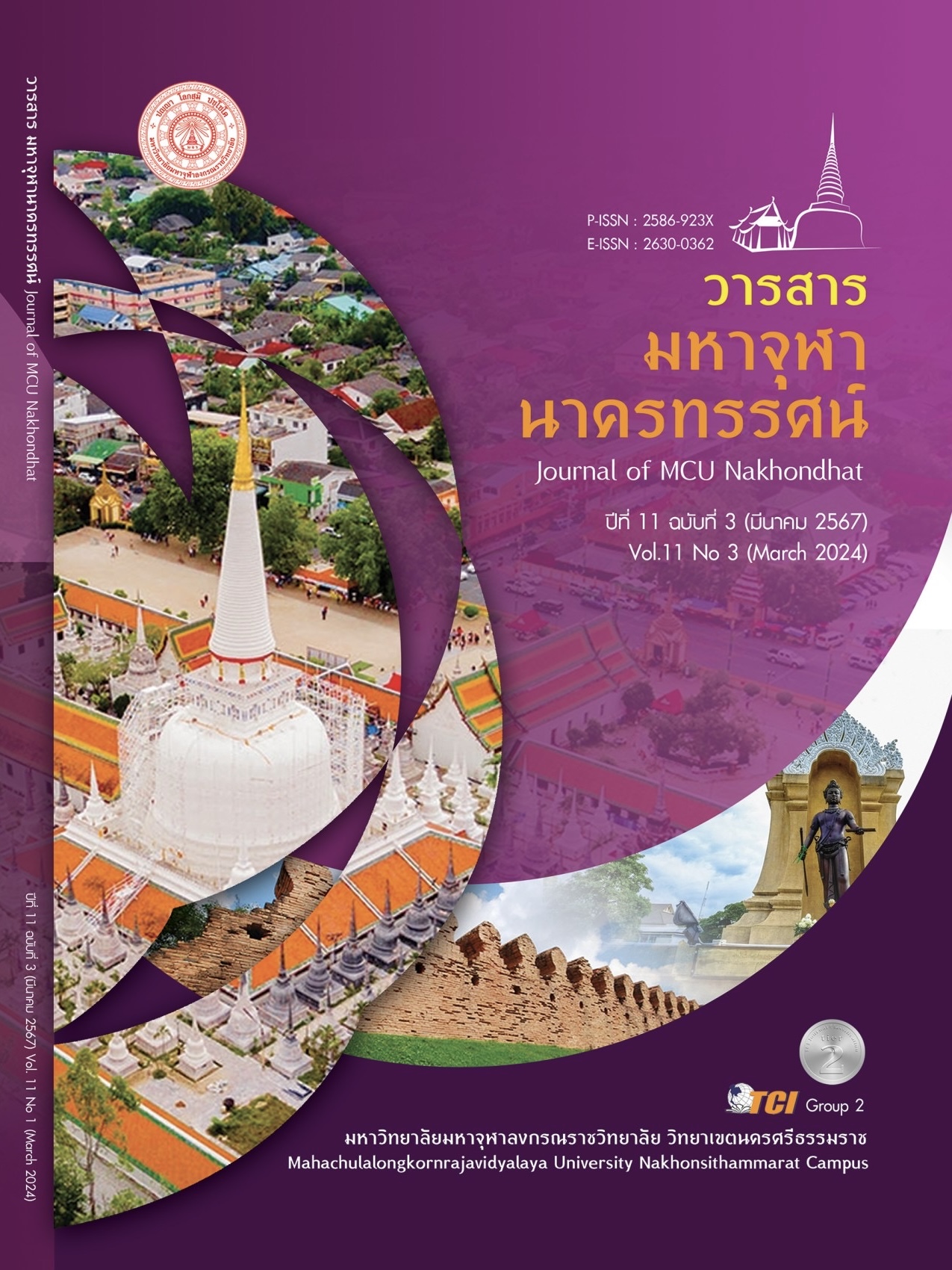THE NARRATIVE STRATEGY AND INSPIRATION FROM CHARACTER CONTENT UNDER THE CONCEPT OF BABY SCHEMA ON FACEBOOK
Main Article Content
Abstract
This research aims to study storytelling strategies and cartoon content under the concept of baby schema on Facebook. It is qualitative research using content from kiwtum pages and sibyl pages, 15 content per page. For July - December 2023, data were collected by researching documents related to related concepts and theories. and analyzed the content To study storytelling strategies and inspiration from cartoon character content under the baby schema concept on Facebook. The results of the study show that 1) Storytelling strategies through cartoon content under the concept of baby schema tells a story through images and captions. Including symbols of characters, scenes, illustrations, told through the perspective of the main character who is both a flat character. is cute Leads to the core of positive thinking and make you feel you have a purpose in life and a round character. It has a cute look. But you learn about conflict in life and how to overcome it by letting go. Venting, but no real solution. But it can lead to peace of mind for the recipient. 2) Inspired by the content of cartoon characters under the concept of baby schema on Facebook to the recipient. Stories that the recipient has experienced or events are presented. Through the core ideas, symbols from the images, and the narrative perspectives of the characters. on topics that cause conflict in the recipient's heart, leads to a connection between ideas and inspiration from many factors. create goals in life Be inspired by yourself and receive inspiration from others through the content of cartoon characters.
Article Details

This work is licensed under a Creative Commons Attribution-NonCommercial-NoDerivatives 4.0 International License.
References
กาญจนา แก้วเทพ และคณะ. (2555). สื่อที่ใช่ ของใครที่ชอบ : การ์ตูน โทรทัศน์ท้องถิ่นแฟนคลับ. กรุงเทพมหานคร: ศูนย์หนังสือจุฬา.
ขจิตขวัญ กิจวิสาละ. (2564). ศาสตร์การเล่าเรื่องในสื่อสารศึกษา. วารสารศาสตร์มหาวิทยาลัยธรรมศาสตร์, 14(3), 9-18.
จิรศักดิ์ จงศรีรัตนกุล. (2560). การเลือกใช้ตัวการ์ตูนเพื่อการสื่อสารแบรนด์ในธุรกิจบริการ. เรียกใช้เมื่อ 10 ธันวาคม 2566 จาก http://dspace.bu.ac.th/bitst ream/123456789/3190/3/jirasak_jong.pdf
ชวรินทร์ ศิลปสุวรรณ. (2558). การเรียนรู้ของเยาวชนไทยเกี่ยวกับวัฒนธรรมญี่ปุ่นผ่านสื่อการ์ตูนญี่ปุ่น. เรียกใช้เมื่อ 10 ธันวาคม 2566 จาก http://dspace.bu.ac.th/jspui/handle/123456789/1876
ชาลิสา สุขีภาค และศิริรัตน์ โกศการิกา. (2563). กลยุทธ์การสร้างแบรนด์คาแรคเตอร์ที่ส่งผลต่อความผูกพันของผู้บริโภคร้านอาหารในเขตกรุงเทพมหานคร. วารสารเกษตรศาสตร์ธุรกิจประยุกต์, 16(1), 1-28.
ดุษฎี โยเหลาและคณะ. (2556). การประเมินผลจากการชมภาพยนตร์เพื่อสร้างแรงบันดาลใจของนิสิตปริญญาตรี มหาวิทยาลัยศรีนครินทรวิโรฒ. ใน รายงานการวิจัย. มหาวิทยาลัยศรีนครินทรวิโรฒ.
เธียรทศ ประพฤติชอบ. (2558). “การ์ตูน” สื่อที่น่าจับตา มาพร้อมมูลค่าที่น่าจับใจ. วารสารการสื่อสารและการจัดการ นิด้า, 1(1), 1-13.
สุรพัสตร์ ภัทรานนท์อุทัย. (2561). ความสัมพันธ์ระหว่างโครงสร้างเรื่องเล่าของ Let’s & Go และกลุ่มคนไทยที่เล่นรถ Tamiya Mini 4WD. เรียกใช้เมื่อ 10 ธันวาคม 2566 จาก http://ethesisarchive.library .tu.ac.th/thesis/2018/TU_2018_623110072_8111_9895.Pdf.
เอนก รัตนจิตบรรจง. (2548). บทบาทของหนังสือการ์ตูนญี่ปุ่นประเภทกีฬากับการเสริมคุณธรรมแก่เด็กและเยาวชน. เรียกใช้เมื่อ 6 ธันวาคม 2566 จาก http://doi.nrct.go.th/ListDoi/listDetail?Resolve_DOI =10.14457/CU.the.2005.690
Chonato, S. (2018). Baby Face Bias. Retrieved December 6, 2024, from http://thematter.co/thinkers /baby-face-bias/49221


